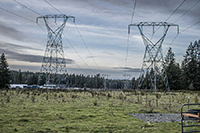 |
||||||||||||||||||||||||||||||||||||||||||
| Archive | Printer Friendly | Send to a Friend | alltricitynetwork.org | Subscribe | ||||||||||||||||||||||||||||||||||||||||||
|
Alltricity Network Report
Education and Upcoming Events
August 2025 Safety Roundtable - August 21, 2025 (Aurora, CO) 2025 Alltricity Network Fall Convention - September 29-October 1, 2025 (Kansas City, MO) PLANNING SESSION: 2026 Alltricity Network Spring Conference - October 16, 2025 (Greenwood Village, CO) November 2025 Safety Roundtable - November 4, 2025 (Kansas City, MO) PLANNING SESSION: 2026 Alltricity Network Fall Convention - November 13, 2025 (Lone Tree, CO) November 2025 Alltricity Scholarship Foundation Golf Tournament - November 18, 2025 (Phoenix, AZ) 2026 Safety Conference - March 4-6, 2026 (Tempe, AZ) 2026 Alltricity Network Spring Conference - April 27-29, 2026 (Omaha, NE) 2026 Alltricity Network Fall Convention - October 5-7, 2026 (San Antonio, TX) Alltricity Network Member Information
The association's trusted network is accessible on LinkedIn. Working side-by-side in a cooperative manner, Alltricity Network members band together for the common goal of bettering the industry and improving service for utility customers. For more than 120 years, these key principles have proven successful and, more importantly, are tried-and-true methods for building strong business relationships.
Alltricity Network Champions is a prestigious group of Alltricity Network supporters with access to useful and beneficial promotional opportunities. Thank you, 2025 Alltricity Network Champions!
Industry Information
The winner of the artificial intelligence (AI) race will depend on how quickly the U.S. can power up data centers, said utility executives, energy analysts and AI experts throughout the 2025 summer conference season. “Are we going to win the AI race? You have to because it’s a national security concern," said Maria Korsnick, president and CEO of the Nuclear Energy Institute.
The U.S. Energy Information Administration (EIA) expects U.S. coal-fired power plants will remain relatively well-stocked through the end of next year in its latest Short-Term Energy Outlook. The EIA estimates power plants in the United States had 124 million short tons of coal on-site at the end of June for them to consume that coal at about 1.3 million short tons per day, meaning they had about 93 days’ worth of fuel on-site.
Investor-owned electric companies in the U.S. are investing more than any other capital-intensive sector, including transportation and retail, as they work to modernize the grid and meet rising electricity needs, according to the 2024 Financial Review released by the Edison Electric Institute (EEI).
The plan is in line with previous actions by the Trump administration to delay the shuttering of coal plants, but it also acknowledges the need for enhanced efficiency and transmission. The plan says the United States must prevent the “premature decommissioning” of critical power generation resources and “explore innovative ways to harness existing capacity, such as leveraging extant backup power sources to bolster grid reliability during peak demand.”
Member Announcements
Four of Colorado’s leading public power and distribution cooperative utilities—Colorado Springs Utilities (Springs Utilities), CORE Electric Cooperative (CORE), Platte River Power Authorityand United Power—are joining forces to explore an innovative transmission solution that will better serve their member-customers. This collaboration aims to reduce electric transmission congestion, enhance system reliability, and expand access to renewable energy sources, all while supporting the State of Colorado’s ambitious carbon reduction goals.
Salt River Project (SRP) announced it has recycled more than 500 tons of previously unrecyclable wooden utility poles, successfully diverting them from Arizona landfills. The poles, which are used to support overhead power lines, are treated with preservatives to increase their durability. This makes them difficult to process through traditional recycling methods.
Xcel Energy Announces Portfolio of New Power Projects to Meet Growing Demand in Texas and New Mexico
Xcel Energy has announced new generation resource additions as part of an overall portfolio to meet the rapidly rising energy needs of its Texas and New Mexico service area. The portfolio includes extensions of 521 megawatts of existing generation as well as the addition of 17 new power projects that will add 5,168 megawatts of new nameplate capacity to the region’s generation fleet by 2030.
CPS Energy announced an agreement with Modern Hydrogen on a new project to explore the potential for increasing grid resiliency and enabling cleaner power generation from natural gas. This project aims to address the growing demand for power resulting from population growth and increasing electricity loads. CPS Energy will pilot Modern Hydrogen’s technology to convert natural gas into clean hydrogen as an ongoing gas-decarbonization service.
“The collaborative work of our Board of Directors and member system directors, trustees and staff, will position Tri-State to deliver reliable and affordable power and energy services to our membership for many decades to come,” said Duane Highley, Tri-State's CEO. “We appreciate Fitch’s recognition of the results driven by the hard work of our members to secure their shared energy future.”
White Paper
Scientists have finally uncovered a quantum counterpart to Carnot’s famed second law, showing that entanglement—once thought stubbornly irreversible—can be shuffled back and forth without loss if you plug in a clever “entanglement battery.”
A laser-equipped research platform has, for the first time, photographed airflow just millimeters above ocean waves, revealing two simultaneous wind–wave energy-transfer tricks—slow short waves steal power from the breeze, while long giants sculpt the air in reverse. These crisp observations promise to overhaul climate and weather models by clarifying how heat, momentum, and greenhouse gases slip between sea and sky.
A team at KAUST has revealed that the short lifespan of aqueous batteries is primarily due to "free water" molecules triggering harmful chemical reactions at the anode. By adding affordable sulfate salts like zinc sulfate, they significantly reduced this issue—boosting battery life over tenfold. The sulfate acts as a “water glue,” stabilizing the water structure and halting the energy-wasting reactions. Not only is this solution simple and cost-effective, but early results suggest it may be a universal fix for various types of metal-anode aqueous batteries.
|
||||||||||||||||||||||||||||||||||||||||||















